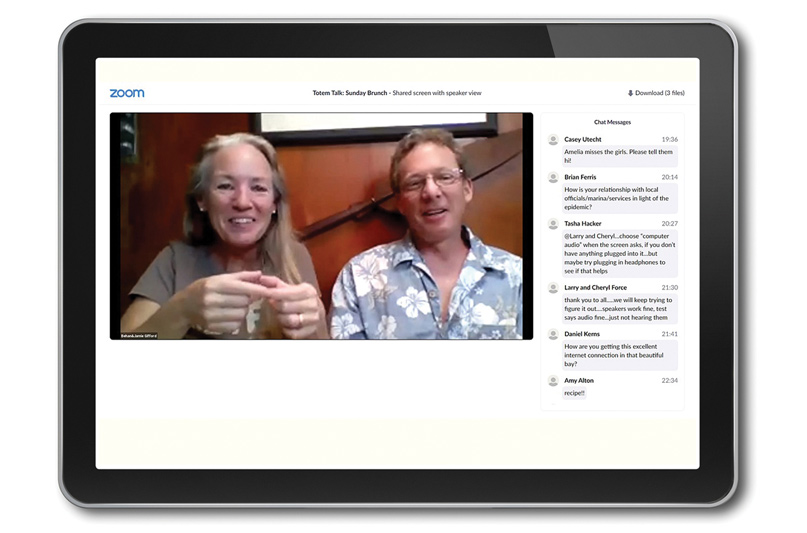I’ve been a professional boating instructor for many years. When I went back to the University of Washington in 2016 to earn a certificate in E-Learning Design & Development, my colleagues assumed I was changing professions. My response was, “No, I’m just expecting my profession to change.”
Historically, most recreational boaters learned from someone they knew. Successful students were lucky enough to find someone that was both a good boater and teacher, had a boat, and time and motivation to teach. Everyone else was pretty much out of luck, unless they could afford to buy a boat and enroll in the School of Hard Knocks (or Hard Rocks). Since recreational boating has been historically male dominated, it was also less likely that a woman knew a girlfriend who owned a boat to teach her on. So many women had even less opportunities.
A few decades ago, sailing and power boating instruction became more available as organizations such as American Sailing Association and US Sailing emerged. Just as a would-be pilot starts in ground school, new boaters were first taught in a classroom and/or out of books. Now it is May 2020, and the entire world has changed.

Sailing and powerboating schools have been closed for weeks. Our primary means of communication, education, and entertainment has become electronic, virtual, and mobile. Recreational boating is no different. YouTube boating channels like Sailing La Vagabond have soared past 1.37 million subscribers. Sailing schools and others are scrambling to respond with webinars and online courses. Some are accelerating the launch of carefully crafted online curriculum. Others seem to just ask famous sailors, “Quick, push video on your phone and tell some sea stories!” Ready or not, online learning for boaters is here to stay for good reasons.
Behan and Jamie Gifford are famous cruisers in the boating world. Originally from Seattle, they’ve been cruising for many years on their 47’ cruiser Totem. They sailed out of Puget Sound in 2008 with their three children on board—ages 4, 6, and 9. They have been raising and homeschooling their kids on board ever since. After voyaging thousands of miles, the couple has a wealth of experience to share, which Behan did when she co-authored Voyaging with Kids.
Together, the Giffords have started a cruising coaching service called Sailing Totem: Dream Worthy to Seaworthy. As they (and many of their clients) are out cruising, much of their coaching is done online. Now, with COVID-19, it’s almost entirely online. Recently, I joined their online gathering “Totem Talk: Sunday Brunch” with about 100 others interested in real time information on boating restrictions and the impact of COVID-19 on their cruising plans. Many questions were asked and then answered in real-time—not in a stale, pre-recorded video on YouTube. It’s what instructional design geeks call “Synchronous Learning.”
These remote education sessions are a great way to share information and skills. With COVID-19, many Pacific Northwest cruisers are facing challenges similar to offshore cruisers, such as limited access to shoreside amenities and uncertain durations between stops. As someone planning for her fifth trip up the Inside Passage this season, learning how to deal with these new challenges are critical.
It’s been helpful to hear from people who are along our route share the current restrictions. If we do go, we likely won’t be stopping as often to provision or dispose of trash and recycling. In the Totem virtual gathering, someone else asked the Giffords about tips for handling trash and recycling while cruising, and Jamie held up a large plastic bottle, explaining how he’d put a week’s worth of recycling in it. Of course!
I later caught up with Behan and Jaime via Zoom to talk about how they’re overcoming the challenges of coaching online rather than in person. Despite some obvious challenges due to connectivity, they shared the many benefits. They’re now able to do a wide variety of powerful training online, from screensharing route plans to offering training on weather resources.
Behan also talked about how several boats they are currently coaching recently anchored together at Bainbridge Island. Another group gathered at a bay in Mexico and respected quarantine guidelines by gathering over Zoom rather than in cockpits. As cruisers do, each boat helped the others with whatever knowledge or skills they had.
With today’s social distancing, what used to be called distance learning is bringing us closer together.